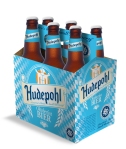 I love writing about beer but also love reading what others have discovered along the way. Pumpkin beer is quite a discovery for many, a new world style to be sure, but other than that, there are no recipe parameters. Pumpkin beer is each brewery’s interpretation, and all are quite different. So the idea of “the best” is beside the point. The modern revival of this colonial style of ale, begins with Buffalo Bill’s Original Pumpkin Ale, a rather tame recipe now, but was considered to be audaciously bold, in those micro-brewery years.
I love writing about beer but also love reading what others have discovered along the way. Pumpkin beer is quite a discovery for many, a new world style to be sure, but other than that, there are no recipe parameters. Pumpkin beer is each brewery’s interpretation, and all are quite different. So the idea of “the best” is beside the point. The modern revival of this colonial style of ale, begins with Buffalo Bill’s Original Pumpkin Ale, a rather tame recipe now, but was considered to be audaciously bold, in those micro-brewery years.
Take for example, Southern Tier’s PUMKING, a massive imperial take that tastes like caramel corn candy in an odd way. A strong (8.6%) ale, its intense flavour disguises this strength.
Samuel Adams Harvest Pumpkin Ale is a tasty brew that has grown in popularity over the years. First appearing in brewmaaster collections, it is now released in its own six pack. A very well made pumpkin ale that maintains balance, while keeping the pumpkin flavour in the forefront,
Dogfishhead’s Punkin Ale takes a brown ale approach, where the pumpkin is in the background of a very smooth ale. Delicious from start to finish.
Snuttynose Brewery’s Pumpkin Ale exhibits the brewmaster’s skill in all its glory, producing a recipe that is multi-layered with flavour notes and pleasant carbonation.
Brooklyn Brewery’s Post Road was the first pumpkin ale for me. Strange now, but years ago, people thought it was strange to drink beer made with pumpkins. That first year it was shipped to the midwest, it was closed-out at 8 dollars a case!
But when it comes to pumpkin ales, the one I would choose is Saranac Pumpkin Ale. Now in their 125th year, F. X. Matt Brewing Company uses their brewing expertise to produce what is for myself, the most drinkable pumpkin ale of all.
Here in the miidwest, Oktoberfest got off to an early start, due to some unusually cool weather in August. Marzen is one of my favorite styles of beer and unlike pumpkin ale, there are recipe parameters (although the ingredients can be super-sized, as is the case with Avery Brewing’s The Kaiser, another imperial version). But the difference between American Oktoberfest and original Oktoberfest, is I think mainly the house yeast used. There is a floral note in Hacker-Pschorr Original Oktoberfest that is unmistakably German. Here in Cincinnati, Samuel Adams Octoberfest has a very delicious presence in local festivities, but for me, the official beer for Cincinnati Oktoberfest should be Hudepohl Oktoberfest Bier. A personal favorite, now being brewed in Cincinnati.
The arrival of a new fall seasonal from the hop-centric folks at Sierra Nevada Brewing Company is worth checking out. Flipside Red IPA proves that the hop road of discovery is never ending. Enjoy.




